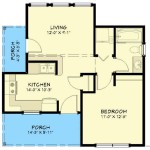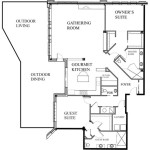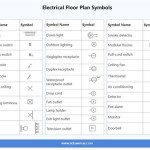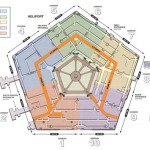Layout Planning for an Ideal Home: A Comprehensive Guide
Designing the layout plan for your house is a crucial decision that will significantly impact your comfort, functionality, and overall quality of life within the space. Here's a comprehensive guide to help you create a well-planned and functional layout for your dream home:
1. Determine Your Needs and Lifestyle
Before you begin planning the layout, take time to assess your lifestyle, family needs, and preferences. Consider the number of bedrooms and bathrooms required, the type of living and dining space you'll need, and any special areas or amenities you desire (e.g., a home office, gym, or craft room).
2. Choose a Floor Plan
Depending on the size and shape of your property, there are several floor plan options to choose from. Common choices include single-story, two-story, split-level, and open-concept designs. Each type has its advantages and disadvantages, so carefully research to find the one that best suits your needs.
3. Create a Room-by-Room Layout
Once you have a floor plan, start planning the layout of each room. Consider the furniture arrangement, traffic flow, and natural light in each space. Create a scale drawing or use online software to visualize the layout and make any necessary adjustments.
4. Establish Key Functional Areas
Within the overall layout, identify key functional areas such as the kitchen, living room, dining room, bedrooms, and bathrooms. Place these areas in a logical and convenient way, considering their proximity to each other and to outdoor spaces.
5. Optimize Traffic Flow
Ensure smooth and efficient traffic flow throughout the house by avoiding bottlenecks and creating wide, unobstructed pathways. Pay attention to the location of doorways, hallways, and furniture to prevent congestion and promote easy movement.
6. Maximize Natural Light and Ventilation
Natural light and ventilation are essential for a healthy and comfortable living environment. Position windows and doors to allow ample natural light into each room. Consider cross-ventilation by placing windows on opposite walls to promote air circulation.
7. Consider Future Needs
Anticipate potential future needs when planning the layout. For example, if you plan to have children or elderly relatives live with you, consider designing an accessible bedroom and bathroom on the main floor. Additionally, leave some flexibility in the layout to allow for future expansion or renovations.
8. Seek Professional Advice
If you're unsure about any aspect of layout planning, don't hesitate to consult with an architect or interior designer. These professionals can provide expert guidance, ensure structural integrity, and help you create a functional and aesthetically pleasing layout.
Conclusion
By following these essential considerations, you can create a well-planned layout plan for your house that meets your unique needs and enhances your living experience. Remember to prioritize functionality, traffic flow, natural light, and future considerations to ensure a comfortable and enjoyable home for years to come.

House Plans How To Design Your Home Plan

Floor Plans Types Symbols Examples

Small House Design 2024005 Pinoy Eplans Modern Plans Floor

Small House Design 2024001 Pinoy Eplans Floor Plans

House Plans How To Design Your Home Plan

Small House Plans Popular Designs Layouts

House Plans How To Design Your Home Plan

Top 5 Modern House Plans With Photos Floor Archid

3 Bedroom House Plans Your Guide To Perfect Home Design

3 Bedroom Contemporary Home Design Pinoy House Designs Plans Layout








